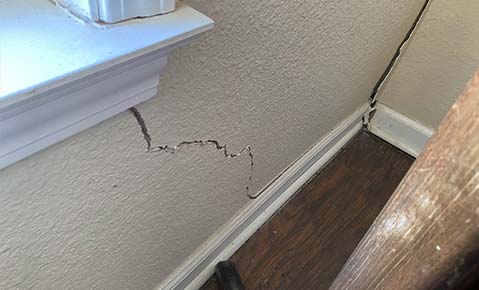Wondering what to do with a troublesome slope on your property? Homeowners driven by the spirit of self-reliance might be tempted to tackle DIY slope stabilization, wielding shovels and determination to safeguard their property. Yet, this undertaking is rarely as straightforward as other DIY projects that fill our weekends with productive satisfaction.In this blog post “DIY Slope Stabilization: Why It Might Not Be Your Best Bet”, we will review slope stabilization and why calling in the experts is the best option.
What Causes Slope Erosion?
Several factors influence how quickly a slope erodes. Below are four of the most common causes of slope erosion:
- Water
- Steepness
- Lack of vegetation
- Poor soil structure
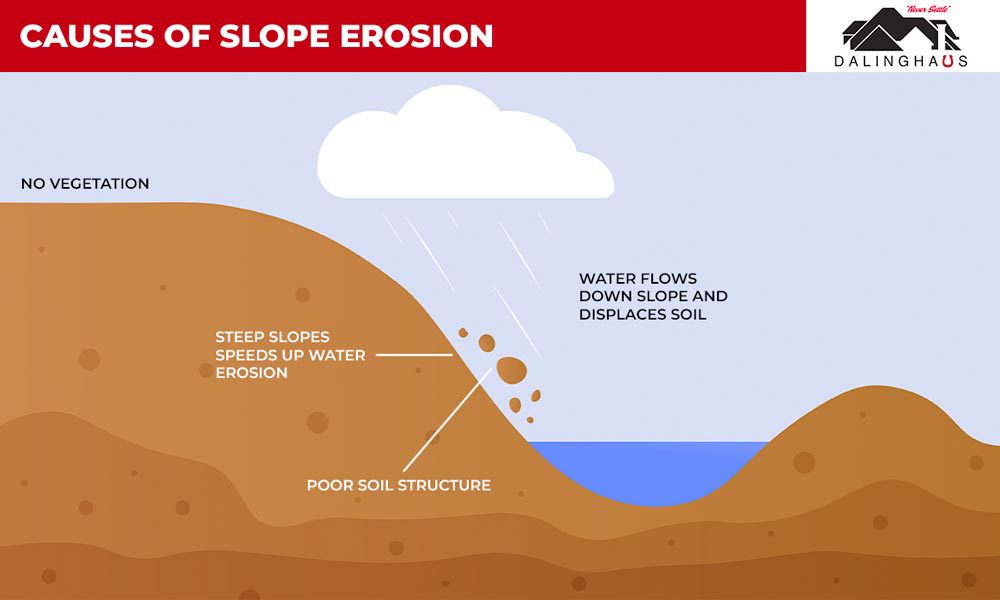
Although there are several ways that a slope can erode, the good news is that there are plenty of erosion control measures that can fix the issue. However, none of those measures are projects you should take on independently.
Professional Slope Stabilization Methods
The first step towards resolving the erosion problems on your property is to hire an experienced professional. That professional will likely recommend one of the following slope stabilization methods:
Regrading
The simplest way to resolve a slope stability problem is to regrade your hillside. The regrading process involves moving the soil on your property to make your slopes gentler and, thus, less susceptible to erosion.
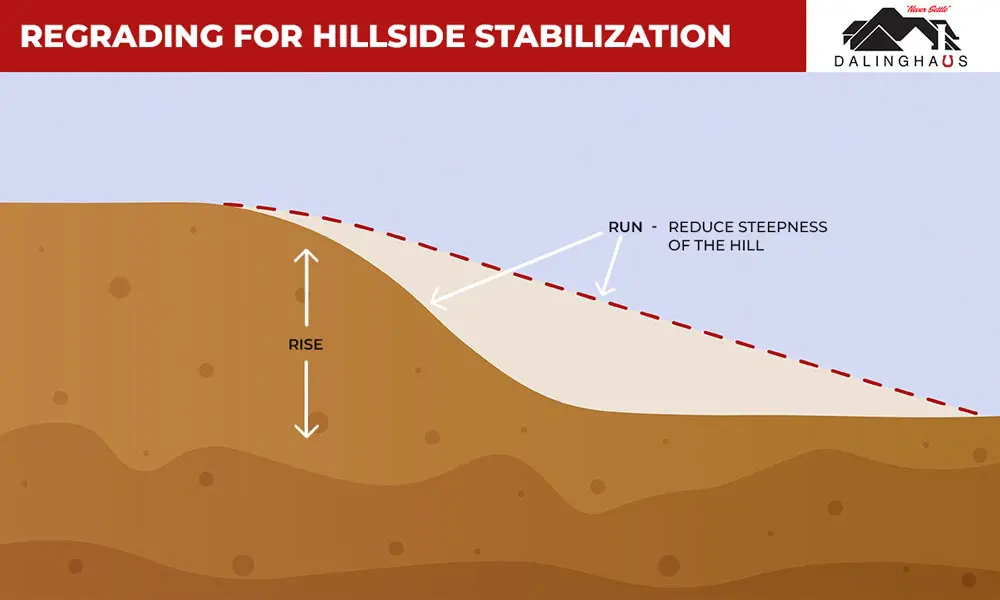
Lessening a slope requires lengthening its overall horizontal run. The slope gains excellent stability and longevity by increasing the run for the same vertical rise. However, this approach is only an option if your yard has enough space for your construction team to regrade the soil.
Additionally, while this is as simple as it sounds, it remains a task you should leave to the professionals. As mentioned previously, slope stability measures like regrading require heavy equipment that the average person doesn’t have.
Vegetation
Another simple and effective way to increase the stability of a slope is to plant vegetation on it. This approach works so well because the root systems of many plants have an incredible ability to hold soil in place. By contrast, bare soil is far more vulnerable to erosion due to its open exposure to wind and rain.
Of all slope stabilization techniques, adding vegetation is the most likely to be successful from a DIY approach. However, it remains beneficial to involve a pro in this process. The correct construction professional will understand which plants are most suitable for slope stability and know the proper planting techniques.
Erosion Control Blankets
Using erosion control blankets is another excellent way to improve the stability of a slope immediately. These blankets usually come in jute, coconut, straw, and geotextile rolls. Erosion control blankets are beneficial for slopes that lack vegetation and are often temporary until grasses and other plants can take root. As such, if your slopes lack stability due to a lack of vegetation, combining seeding with erosion control blankets is a fantastic way to increase strength in the short and long term.
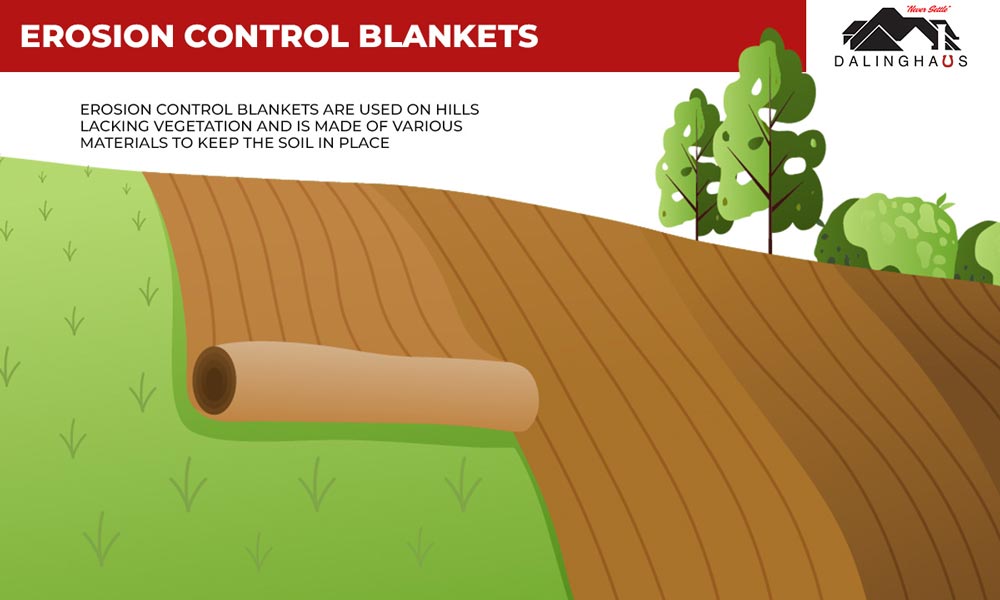
Drainage Structures
Water is the primary cause of slope erosion in most cases. Each time it rains, water hits the slope and flows down towards the bottom. The longer and steeper a slope is, the greater the chance the water has to pick up and displace soil. This phenomenon accounts for most of the erosion you’ll experience on your property.
Unsurprisingly, installing drainage structures is a reliable way to protect a slope from water. A well-placed drainage system will collect water that flows down your hillside and convey it to a location where it will not cause damage.
One of the best drainage structures for this purpose is the drain channel, also known as a French drain. This type of drain is a long, linear trench that runs along the slope, intercepting water as it flows. The French drain dramatically reduces its erosive effect by capturing the water along the slope and conveying it away.
Retaining Walls
Installing a retaining wall is the most lasting way to add stability to a slope. Retaining walls are structures embedded into a hillside that hold back soil. By accounting for several feet of a slope’s vertical rise, retaining walls allow the slopes above and below to become less steep.
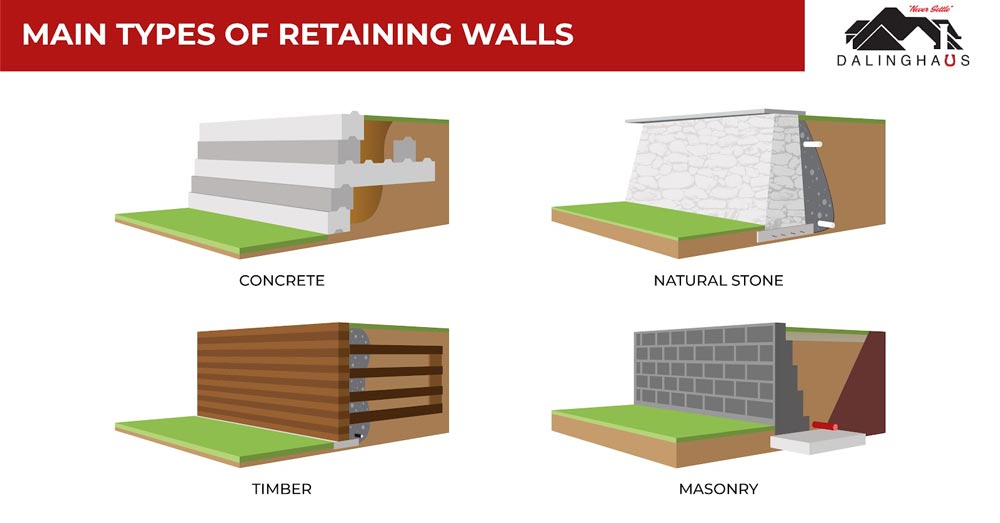
Many different retaining wall materials are available, including concrete, natural stone, masonry, and much more. Additionally, the best retaining walls include built-in drainage structures, which will also help manage stormwater runoff on your hillside.
DIY Slope Stabilization is Unsafe
The top reason you should not attempt to stabilize a slope on your property alone is that doing so is entirely unsafe. Slope stabilization can be a surprisingly complex challenge that requires heavy machinery in many cases. As such, the average homeowner does not have the skills or expertise to carry out a project like this safely.
DIY Slope Stabilization is Rarely Successful
The second most critical reason DIY slope stabilization is a bad idea is that it is unlikely to succeed. Since most people don’t have construction experience, they lack the insights and skills to add stability to an eroding slope. Many DIY slope stabilization efforts can lead to your erosion problem worsening.
Signs that a Slope Lacks Stability
By now, it’s clear that you cannot stabilize a slope on your own. However, it remains possible for you to recognize the signs that slope stabilization is something you need to consider sooner rather than later. Below are three signs that indicate you should contact a construction company and discuss erosion control:
- Visible cracks in your hillside
- Bulging soil at the toe of the slope
- Leaning trees and structures along the slope
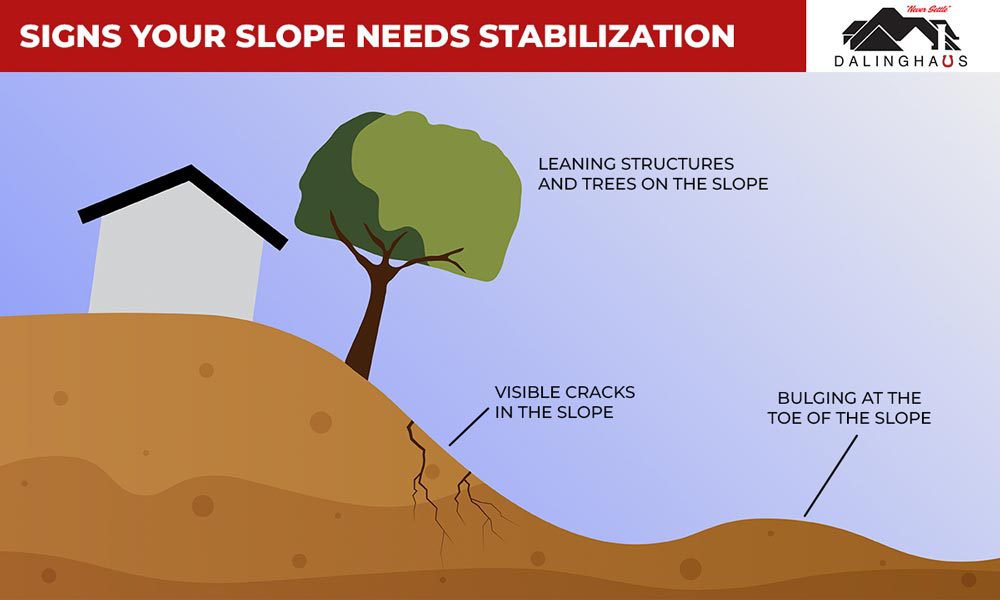
Knowing these signs allows you to notice erosion issues quickly. The sooner you can identify that your slopes need stabilization, the sooner you can have a professional intervene and reduce the adverse impact erosion will have on your landscape.
Get Help from a Professional
The most important fact to remember from this article is that DIY slope stabilization is not something you should attempt to complete independently. Instead, the best approach is to hire a professional to resolve your property’s erosion control issues.
If you live in Southern California, Nevada, or Arizona and struggle with slope stability, contact Dalinghaus Construction. Our team provides slope stability solutions and various other construction services. Reach out to us today to learn more.


